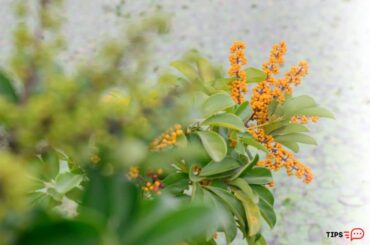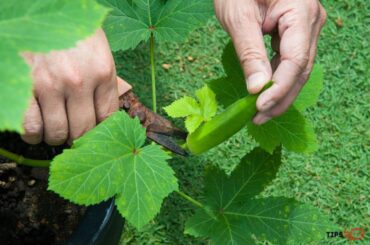My friend recently bought a staghorn fern for his indoor garden. But when I went there yesterday, I saw the fern was dying. After further investigation, I found not one but several reasons for this tragedy. So I explained to him the reasons and how to take care of staghorn fern properly. Here is how to save a dying staghorn fern and proper care techniques for it.
As I have noticed in previous years, because of their distinctive qualities, many gardeners now frequently grow Staghorn fern plants as houseplants. Many people also think of these plants as living works of art and grow them as houseplants because they are so simple to propagate and take care of. Furthermore, there are multiple fern species in the world. But do you know the specific secrets of staghorn fern gardening? Let me explain this to you.

How To Save A Dying Staghorn Fern
First and foremost, you need to closely look at the fronds and get rid of all the dead leaves. Next, check whether any pest has infested the plants. In the meantime, you could see whether you could spot any signs of overwatering as well. If the plants have developed black or brown spots on the pinnae, it means the plants are experiencing an over-watering situation.
Ensure that the shield and antler fronds don’t stay in contact, as if they stay that way, it would badly affect the air circulation of the plants. So, if you spot your plant’s shield and the antler fronds are touching each other, you need to separate them. Refrain from exposing the plants to direct sunlight and mist them once every three to four days. That way, it would help the plants maintain the right humidity levels. Fertilize the plants once every two weeks.
If the roots seem to have overgrown the pots, you can repot them in spring. When repotting, you need to choose a pot that has sufficient drainage and make a soil mix that contains perlite, sphagnum moss and charcoal. Always try to mimic the same conditions they get in their natural habitat when you cultivate them.

What you need to do to keep them alive
Do not overwater or underwater them.
I know you want to water your plants every day. But watering Staghorn Fern is a very important and tricky business. But if you happen to under or over water them, your precious Staghorn fern plants may die.
Therefore, you might try to follow a few key guidelines when watering these plants. For instance, during the hot weather, you should only water them once per week. You could limit watering them to once every fortnight or once every three weeks during the colder months. Staghorn ferns also prefer to have some misting once in a while. Hence, you can keep them in humid areas. For example, you could keep them in bathrooms and mist them quite often instead of watering them.
When it is summer and fall, you may mist the plants regularly. Staghorn fern plants will not survive in drought conditions. However, you need to minimize watering in the winter. If you notice the antler fronds tend to become brown, it literally means your plants suffer from overwatering. So, in this circumstance, you need to ideally cut back on watering till they show signs of recovery. On the other hand, if the antler fronds tend to become brown or start to wilt , it means the plants are suffering from under watering and you need to start watering the plants immediately.
You could water them in two ways. For example, you can either mist them or soak them in water. When soaking the plants, you should soak the plants in a water basin for about 10-20 minutes and make their roots saturated. If not, you may also place the plants in a bathtub or in a sink and make water run through the roots till saturated. Make sure that the water you are using is at room temperature.
Besides soaking, misting is one more thing that you could do to save the dying Staghorn fern plants. You simply need to arrange a spray bottle to do the misting. Furthermore, ensure that you do it for the entire plant, especially beneath the shields and under the fronds.
Appropriate temperature
You need to keep the Staghorn fern plants at the right temperature to help them thrive without dying. Ideally you need to maintain a temperature which will not drop to 50 degrees Fahrenheit and which does not exceed 100 degrees. Hence, do not leave them exposed to the scorching sun as it would be unhealthy. Apart from that, it is best to bring them indoors if you are having much colder weather at night.
Sufficient humidity
Staghorn ferns don’t like it when their roots are wet and it’s hot outside. In fact, they would prefer to grow under circumstances resembling those in a greenhouse. So, if you want to grow plants, I advise you to place them in a location where they can get a lot of humidity.
Adequate sunlight
Staghorn fern plants are endemic to tropical regions, and they would prefer to have indirect bright sunlight. So, don’t ever expose these plants to direct sunlight, even accidentally. Ideally, you should keep the plants indoors whilst allowing them to gain sufficient sunlight as well. It is noteworthy that Staghorn fern plants don’t opt to grow in artificial light, and if you happen to grow them exposed to artificial light, chances are that they will even perish at the end.

Add fertilizers.
If you believe your beloved Staghorn fern plants are prone to dying, you should ideally think about adding some fertilizers to help them grow stronger. A balanced water-soluble fertilizer would be the most appropriate one to feed them. However, don’t feed them when they are dormant as it is unnecessary to do so. Some people tend to feed the Staghorn fern plants by placing a banana peel under the shield front as well.
Consider remounting the Staghorn fern plants
You need to permanently install the Staghorn fern plants, and you don’t really need to remount the plants. However, if you happen to see the plant fronds have started to creep from their edges, you need to ideally fix the fern board to a wooden piece whilst using some nails.
Attend the plant’s problems as promptly as you can.
Like other plants, staghorn ferns are susceptible to diseases like root rot. Root rot may take place due to Rhizoctonia in soggy, wet conditions. So, if you happen to come across any signs of root rot in those plants, you need to immediately take action and try to rectify it. Chances are that the root rot may spread all over the plants and kill them at the end. So, at the very moment they tend to show signs of root rot, you need to take action.
Sap sucking bugs
Pests such as scales and mealybugs could turn out to be troublesome for the healthy growth of the Staghorn fern plants. The reason behind this is that they would actively feed on the inner side of the leaves, causing greater damage to the plants in a short span of time. If you come across such a situation, you need to immediately start treating the plants with a non oil based insecticide.
What are the other common problems
If you happen to see the Staghorn fern plants collapsing, you need to ideally cut back on watering and try to save the plants from root rot. In fact, your plants may tend to collapse as a consequence of root rot. In addition to that, if the Staghorn fern plants develop some brown or black spots at the antler frond bases, you need to cut back on watering. In fact , exposure to cold weather or overwatering would be the two main reasons for this condition.
If you spot your beloved Staghorn fern plants carrying pale leaves, it is very likely that those plants want more shade, as the direct sunlight may be too harsh for the plants. If the plants are getting inadequate humidity levels and inadequate lighting levels, chances are that they may produce small fronds. Once you fix these root cases, they will grow vigorously.

Special notes: What exactly are staghorn fern plants?
Staghorn fern plants are epiphytic plants. Staghorn fern plants may appear to be ordinary plants because they are frequently grown in small pots. However, when you cultivate them, you need to grow them by either mounting them on a board or hanging them in a basket. When they grow in the wild, they usually grow on the surfaces of the trees. Staghorn fern plants have some vigorous, firm roots which would hold them in place whilst invading the trees. Apart from that, they make use of their fronds to absorb both nutrients as well as water.
Special Note : The anatomy of the Staghorn fern plants
They could be completely different from other fern species. So, if we look at the anatomy of these plants, they would not conduct their reproduction through flowers or through seeds. However, they would still release microscopic spores into the atmosphere and they would transform into new plants later on.
You may call the leaves of the Staghorn fern plants fronds, and they may contain two types of fronds, such as antler fronds and shield fronds. If we further describe the antler fronds, they are somewhat large and bifurcated as well. These would usually arise from the center of the fern. They may tend to look like deer antlers, and that has made them inherit the name antler fronds. They would develop the spores on the inner side, and those spores would tend to look like brown fuzz.
On the other hand, Staghorn fern plants’ shield fronds would form around the base of the plants. They are somewhat hard and round in shape. Furthermore, one might believe that they have the appearance of a plate. The main purpose of the shield fronds is to protect the ferns’ roots and to absorb nutrients and water from the soil. You could spot them in green at the beginning, which may tend to take on a brown color as they dry up later on. This is how they are naturally structured in their normal life cycle.
Some people have a wrong perception that if they spot any brown fronds, they believe that the plants are dying, whereas they are not. This literally means it’s completing its life cycle and that you need to remove brown leaves. The last part of the Staghorn fern plants is their root ball.
Conclusion
For the most part, Staghorn fern plants are so adaptable that they would enhance the aesthetic appeal of the entire house. Your plants may grow as vigorously as they can if you take care to prevent exposing them to low humidity or intense sunlight. Watering them properly and feeding them properly are two important factors when trying to save them from dying. To conclude, I hope this article was useful for you to learn how to deal with this kind of situation and now that you are confident in dealing with it.
Read Next : Ceanothus Care And Propagation (Easy Guide)




